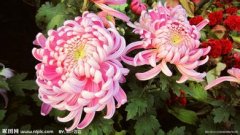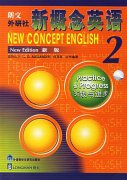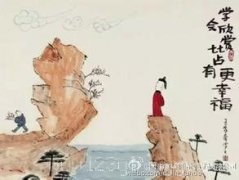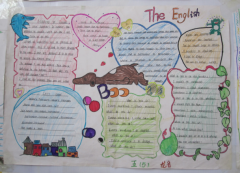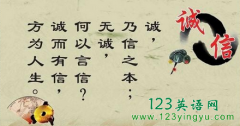人教版高中英语选修9Unit4课文复习(含答案)
编辑:高中作文网
Unit4 Exploring plants
Plant exploration in the 18th and 19th centuries
The plants in our gardens look so f__ that often we do not realize that many of them actually come from countries far away. Collecting “exotic” plants, as they are called, d__ back to the earliest times. Many ancient c__ saw the value of bringing back plants from distant lands. The first plant collecting expedition __ (report) in history was around 1500 BC when the Queen of Egypt sent ships away to g__ plants, animals and other goods.
However, it was not until the eighteenth and nineteenth centuries that the __ (explore) of the botanical world began on a large scale. Europe had become interested in s__ discovery and the European middle classes took great interest in __ (collect) new plants. This attraction to e_______ plants grew as European nations, like the Netherlands, Britain and Spain, __ (move) into other parts of the world like Asia and Australia. Brave young men took the o__ of going on botanical expeditions, often facing many dangers including disease, near-starvation, s__ environments and conflicts with the local people.
An important group of collectors were French Catholic __ (传教士) who, by the middle of the 18th century, were beginning to set themselves up in China. One such m__ , Father d’Incarville, was sent to Beijing in the 1740s. He collected seeds of trees and bushes i_____ those of the Tree of Heaven. Just before he died, he sent some Tree of Heaven seeds to England. They arrived in 1751 and plants from these seeds were grown t__ Europe and later, in 1784, the s______ was introduced in North America.
Sir Joseph Banks was a very famous British plant collector, who a______ James Cook on his first visit from England to Oceania. The p__ of the trip for Banks was to record the plant and
animal life they came across. He and his team collected examples w______ they went onto dry land. In 1769, Banks collected vast q______ of plants in the land now _____(know) as Australia. None of these plants had been recorded by Europeans before. Cook called the bay where the Endeavour had a__ Botany Bay.
__ (keep) plants alive during long land or sea voyages was an e__ challenge. Large numbers of seeds failed to grow after long sea v__ or trips across land between Asia and Europe. One plant explorer lost several years’ work when his plants were r__ with seawater.
The world of plant e__ was completely changed with Dr Nathaniel Ward’s invention of a tightly sealed p__ glass container. This invention, __ (call) the Wardian case, allowed plants to be t_____ on long journeys. In 1833, Ward shipped two cases of British plants to Sydney, Australia. All the plants s__ the six-month journey. In1835, the cases made a r__ trip with some Australian species that had never been s__ transported before. After eight months at sea, they arrived s__ in London.
A British man called Robert Fortune was one of the __ (early) plant __ (collect), to use Wardian cases. He made several trips to China between 1843 and 1859. At that time, there were r__ on the m______ of Europeans and so, in order to travel unnoticed, he developed his __ (fluent) in Chinese and dressed as a Chinese man, even shaving has head in the Chinese style. He e__ many adventures __ (include) huge thunderstorms in the Yellow Sea and p__ on the Yangtze River. Not only did Fortune i_____ over 120 species of plants to Western gardens but he also shipped 20,000 tea plants from Shanghai to India, where a successful tea i__ was established.
The second half of the nineteenth c__ was a very important period of plant exploration. During this time many Catholic missionaries were sent to China from France. They v__ the study of the natural sciences and many of the missionaries knew a lot about plants and animals. Their expeditions r__ in huge plant collections, which were sent back to France. One of the c_____ was Father Farges, who collected 37 seeds from a tree that had a__ to him. This tree was later called the Dove Tree. He sent the seeds back to France in 1897 but only one seed grew.
Although the missionaries collected large numbers of s__ , there was not enough material for growing particular species in Western gardens. However, __ (Europe) botanists, were very excited with the knowledge that China had a vast v__ of plants, so many plants collectors were sent on collecting trips to China. One of these collectors was E H Wilson who, in 1899, was able to collect a large q__ of seeds of the Dove Tree that Father Farges had discovered. Wilson and other plant collectors i__ many new plants to Western gardens.
Flowers and their animal pollinators
Over time, many __ (flower) plants and their animal pollinators have e__ together. The plant needs the animal to pollinate it and the animal is r__ with food called nectar when it visits the flowers. Pollen becomes a__ to the animal during its visit to a flower and is then passed on to another plant’s b__ on its next visit. So pollination takes place, __ increasing the chances of the survival of the plant species.
Through evolution, most flowers have a__ to attract specific types of pollinators. Bees, moths and b__ are the most important pollinators. Flies, wasps, beetles and other animals such as birds and bats are less c__ .
The type of pollinator d__ on the characteristics of the flower such as its color, shape, size and smell. For example, yellow flowers a__ bees, while red flowers attract butterflies. The nectar in some flowers can only be r__ by a bird with a long bill or a long-tongued moth or butterfly. The chart below describes some of f__ of flowers tat attract certain kinds of pollinatirs.
Pollinator
Typical flower characteristics
Bees
Colour: bright yellow, blue; the flower often has a s__ pattern to guide the bees to the nectar inside.
Shape: the petals are wide enough for bees to land on; usually the nectar is at the end of a small, narrow tube _____ (a.whose b.that) length is the same as the tongue of a particular species.
Smell: delicate, fragrant
Butterflies
Color: red, orange.
Shape: the petals form a tube of a s_____ length for butterflies. Tiny flowers are often in tight bunches that p_____ a place for butterflies to l_____ on, eg daisies.
Smell: odourless.
Moths
Colour: white, light-coloured so moths can see them at night.
Shape: the petals form a deep tube to match the length of a s__ moth’s tongue. The petals lie flat or bend back so the moth can get close to the flower.
Smell: strong, sweet perfume, __ (typical) only given out at night.
Flies
Colour: dull-__ (colour), brownish red.
Smell: strong like rotting meat.
Humming-birds
Colour: brightly coloured, especially red and orange.
Shape: tube-shaped; petals bent back so birds can get close.
Smell: not odour.
Bats
Colour: white, light-coloured so bats can see them at night.
Shape: open at night; large, strong with wide mouths for long tongues.
Smell: musty, __ (fruit) smell.
参考答案
Unit4 Exploring plants
PLANT EXPLORATION IN THE 18th AND 19th
familiar; dates; civilizations; recorded; gather; exploration; scientific; collecting; exotic; moved; opportunity; severe; missionaries; missionary; including; throughout; species; accompanied; purpose; whenever; quantities; known; anchored; Keeping; enormous; voyages; ruined; exploration; portable; called; transported; survived; successfully; return; safely; earliest; collectors; restrictions; movement; fluency; experienced; including; pirates; introduce; industry; century; valued; resulted; collectors; appealed; specimens; European; variety; quantity; introduced
FLOWERS AND THEIR ANIMAL POLLINATORS
Flower; evolved; rewarded; attached; blossom; therefore; adapted; butterflies; common; depends; attract; reached; features; special; whose; suitable; provide; land; specific; typically; coloured; fruity

